
Please accept my apology. It is terribly rude of me to introduce an article about Raphael Tuck & Sons postcards with a card published by Faulkner, nevertheless, say hello to Cecilius Calvert.
Cecil was born in 1605 (fifteen years before the Pilgrims landed at Plymouth Rock) at his father’s estate in Kent, England. He became a successful London barrister (lawyer) and a worthy politician, but he became famous, not for what he did, but for who his father was. His father’s name was George Calvert, the First Baron Baltimore, a title awarded him by King Charles I in the 1620s.
When Cecil’s father died in 1632, he inherited Maryland and became its first proprietor.
Most school aged children in Maryland’s largest city are taught that their city was founded in 1729 and named for Cecilius Calvert, the 2nd Baron Baltimore, who held the charter for Maryland colony. The name Baltimore is from a small port town named Baile na Tighe Mor in southern Ireland where the family had its ancestral roots.
Baltimore’s early history is part of four very different chapters in American history books: 1. its founding as a port town established to ship tobacco and grain to England;
2. the Continental Congress meeting held there in 1776 during which, the congress ordered the printing of signed copies of the Declaration of Independence;
3. the Battle of Baltimore in 1814 when a young poet named Francis Scott Key penned a verse which he entitled Defence of Fort M’Henry; and
4. the April 19, 1861, Pratt Street Riot. A social black-eye for the citizens of Baltimore who were Confederate sympathizers, that attacked members of the 6th Massachusetts Infantry that had just arrived in town on their way to protect Washington, DC. It was the first bloodshed of the Civil War.

The first building to house the Baltimore government was the Merchants Exchange Building. It held a variety of businesses and government offices during the 19th century. The Merchants’ Exchange Building site was bounded by Gay Street and Lombard Street. It was demolished in 1901 and replaced by Baltimore City Hall.
Mount Royal Station was a Baltimore and Ohio Railroad station that opened in 1896. It was the first railroad station in the world to have electrified passenger trains. The station is now part of the Maryland Institute College of Art (MICA) campus. In its heyday the Royal Blue Line, passenger service operated by the Baltimore and Ohio Railroad, between Washington, D.C. and New York City, operated through Mt. Royal Station. It ran from 1890 until 1917.
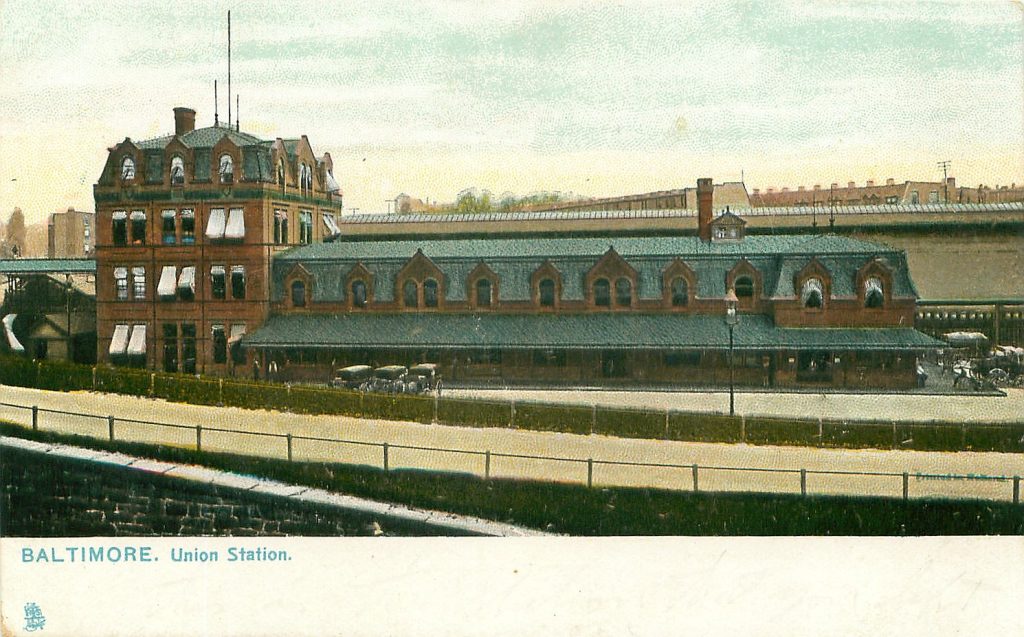
Baltimore’s Union Station, now known as Baltimore Penn Station, was built in 1911 for the Pennsylvania Railroad and Western Maryland Railway. The station was renamed in 1928 to match the Pennsylvania Railroad’s other stations. The station seen on this postcard was demolished in January 1910. It was replaced by the present station which opened on September 15, 1911.

The Observatory in Patterson Park has been called “the most curious public building in America.”
Built in 1891-1892 by local contractor Cornelius Sheehan, the tower took six months to complete. Its design reflects the Gilded Age interest in Asian architecture, and for that reason, it became known colloquially as the “pagoda.”
The iron, glass and wood structure stands 60 feet tall on Hampstead Hill (a key battleground in the Battle for Baltimore in 1814), the high promontory allows a breathtaking 360 degree view. From the top of the tower one can view downtown Baltimore’s many neighborhoods,
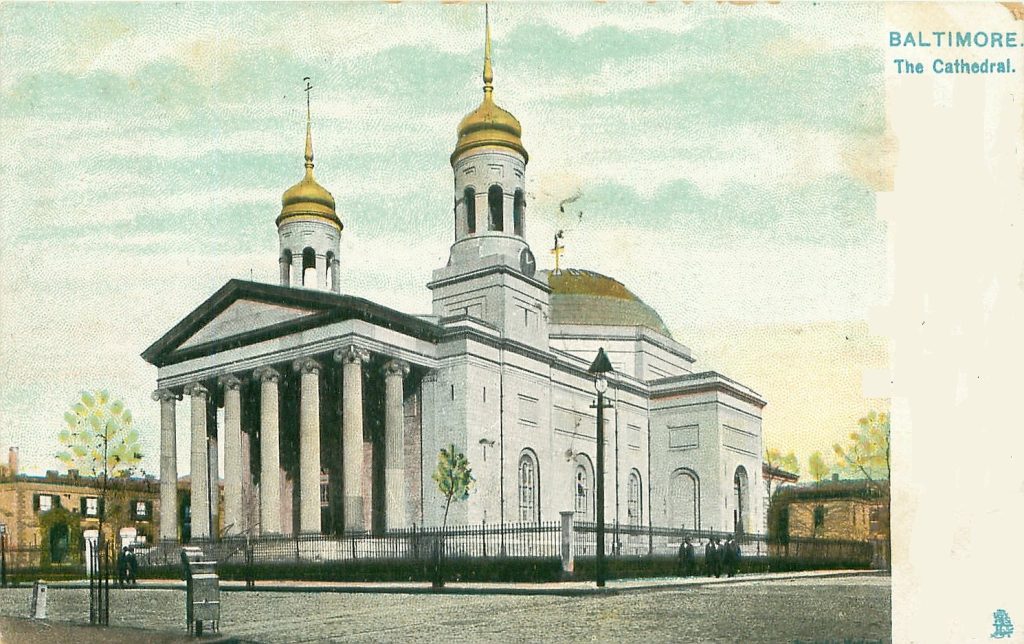
The beautiful Baltimore Cathedral, constructed with a silver-gray gneiss façade, (gneiss is a common high grade metamorphic rock), is often called the Baltimore Basilica. It was the first Catholic cathedral built in the United States after the nation’s founding and was among the first religious buildings constructed after the adoption of the U. S. Constitution. The photo on the card is from 1907.
Through the years, the Baltimore Cathedral has hosted some of the world’s most important Catholic luminaries, recently it welcomed Pope John Paul II in 1995 and Mother Teresa in 1996. On average the church has more than one-million visitors each year.
Founded and opened on November 1, 1844, Western High School, a college preparatory school for girls is the oldest all-girls public high school in the United States. The photo on the card, from around 1907, was taken when the school was at 100 North Paca Street. The current campus is on Falls Road in northwest Baltimore.
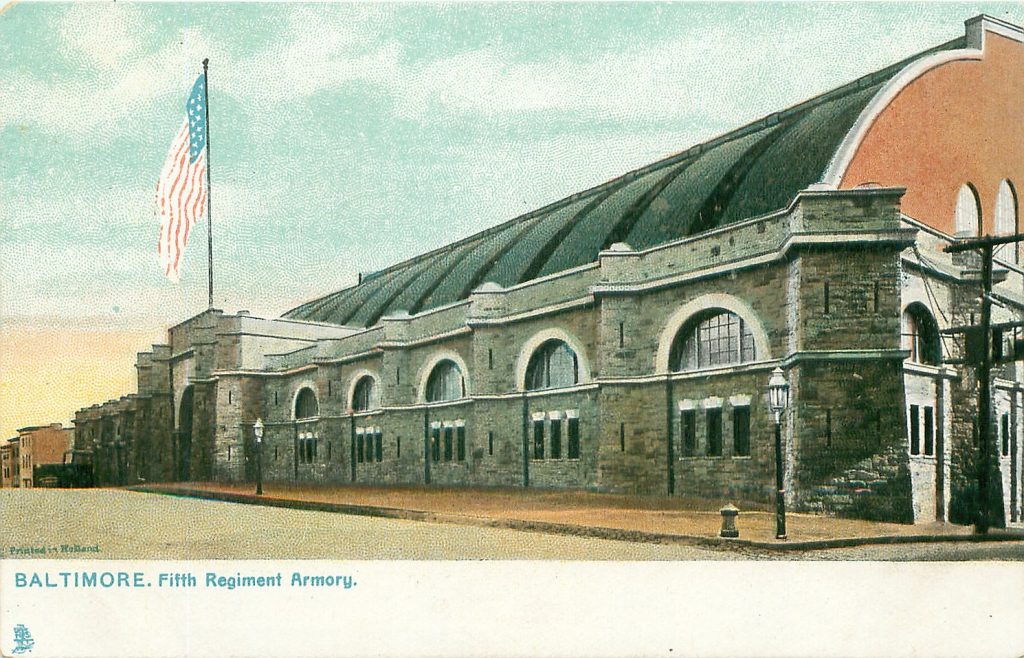
The historic Baltimore armory was built in 1901. It is a fortress-type structure situated in midtown. It has been staffed for more than 120 years. In its prime the facility was so respected that the national Democratic Party held its 1912 convention in the 200 x 300 foot drill hall. The delegates voted more than forty ballots, but in the end, they nominated New Jersey Governor, Woodrow Wilson for President and the ever-popular Indiana lawyer Thomas R. Marshall for Vice President.
Currently the armory building is the home of Maryland’s Museum of Military History. The MMMH collects artifacts and produces a regular schedule of exhibits, lectures, and seminars related to Maryland’s militias, which first gathered in colonial times.
**
This twelve-card set was produced in the same print style (RAPHOTYPE) as the Pittsburgh cards you read about last month. They are numbered 5122-5133.
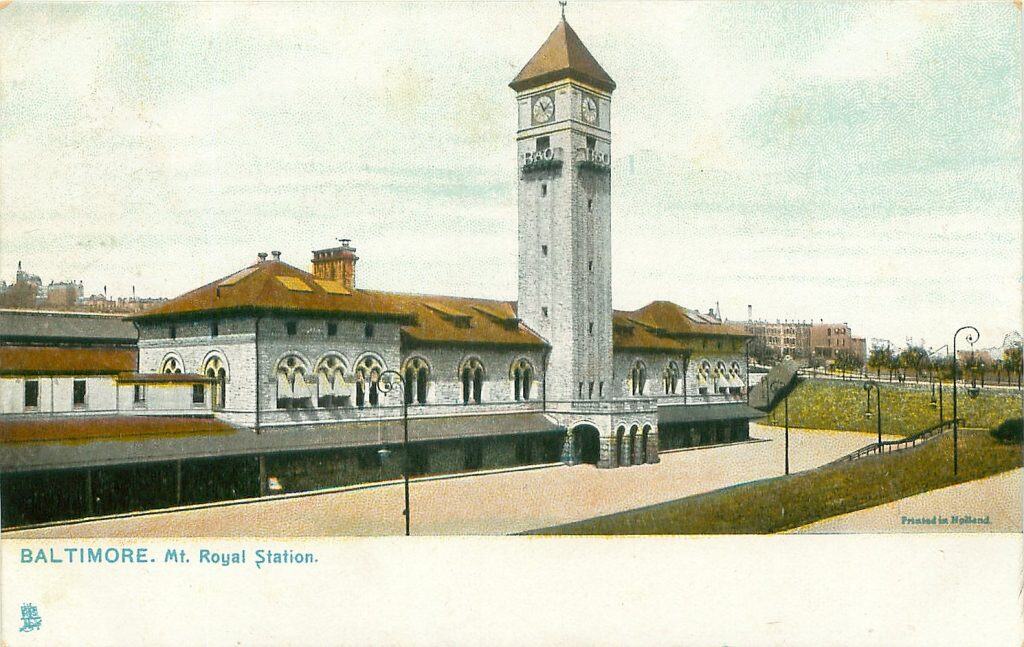
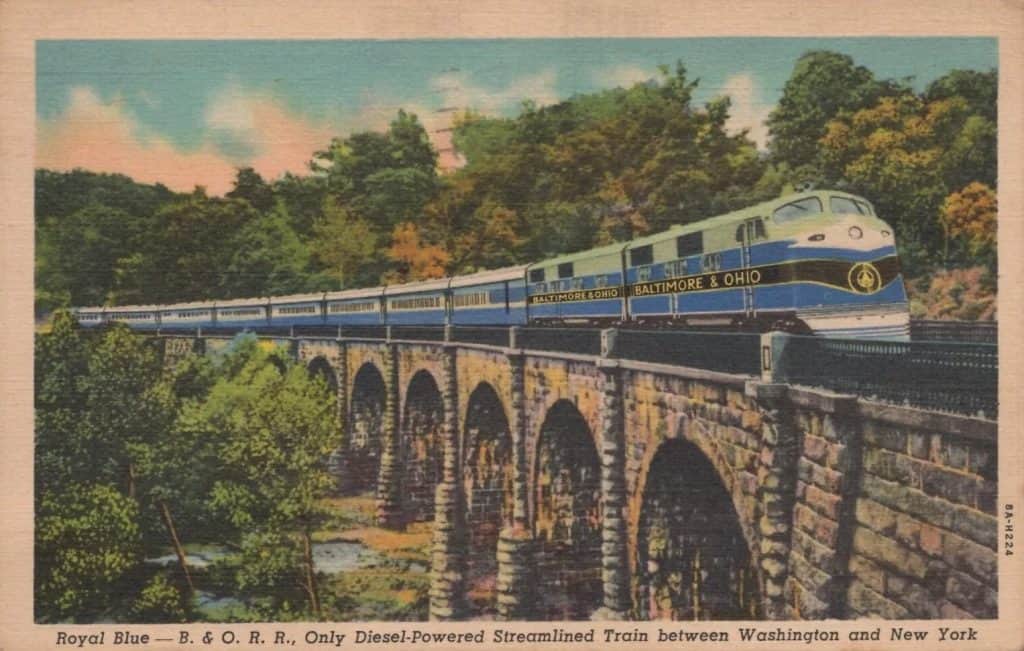
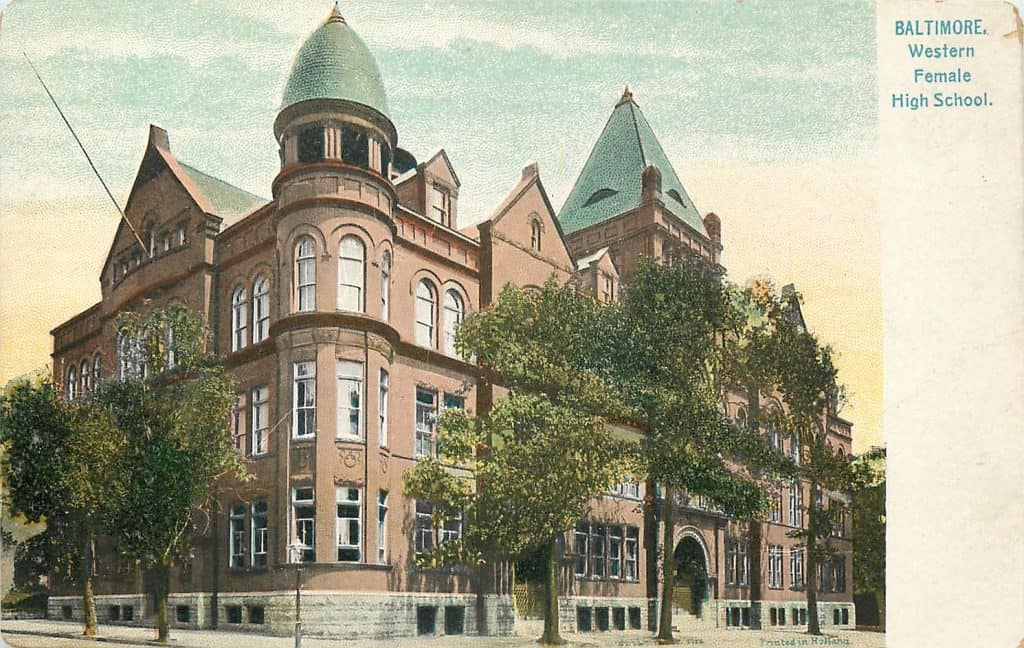
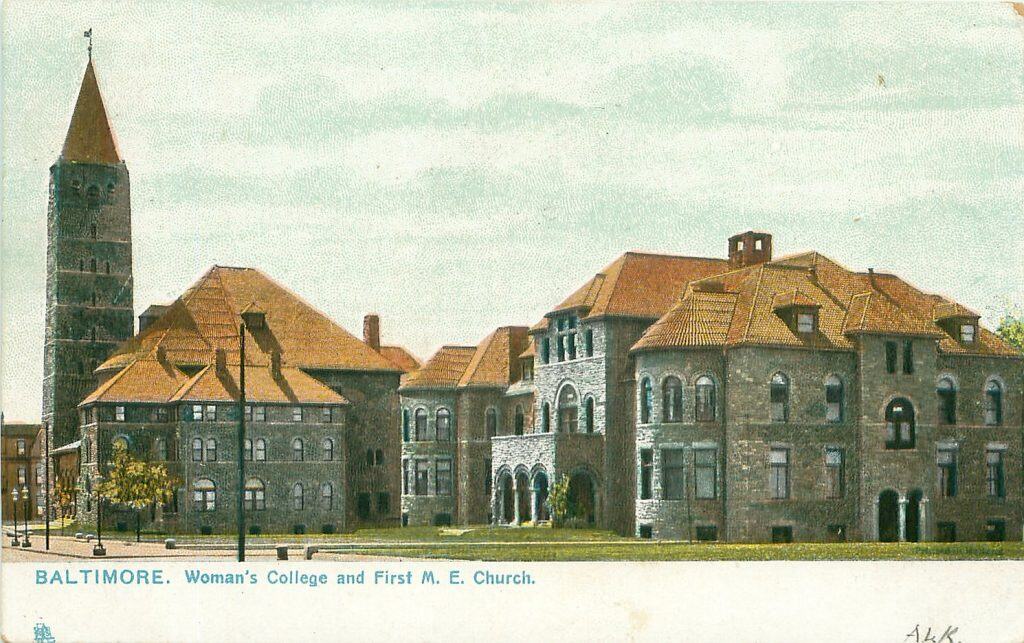
After operating from 1890 to 1917, the Royal Blue Line was revived in 1935 and discontinued in 1958. The Teich card illustrating that train was issued in 1938.
Thanks, Graham. Always good to see Tuck cards of cities. My own NYC collection includes many similar cards.
Thanks for sharing the Tuck article. I have a large collection of Tuck Annapolis and U S Naval Academy. I consider Tuck the Gold Standard
Great short history. Great images. Am sharing with my Baltimore relatives.
Thanks for sharing the history of the buildings. I have been to the Cathedral, a beautiful church structure.